Reach Life
Service Design, UX/UI
2023

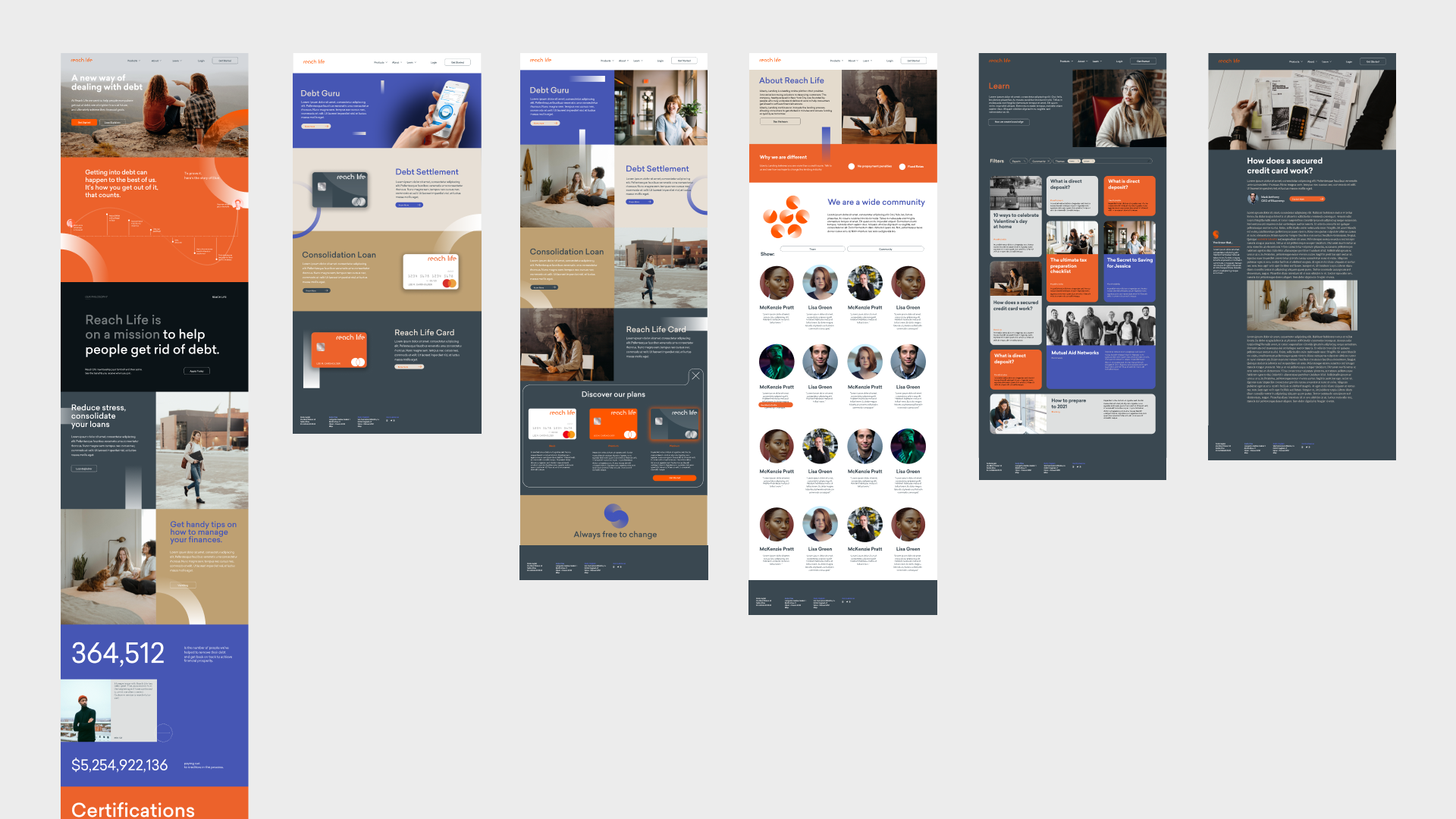

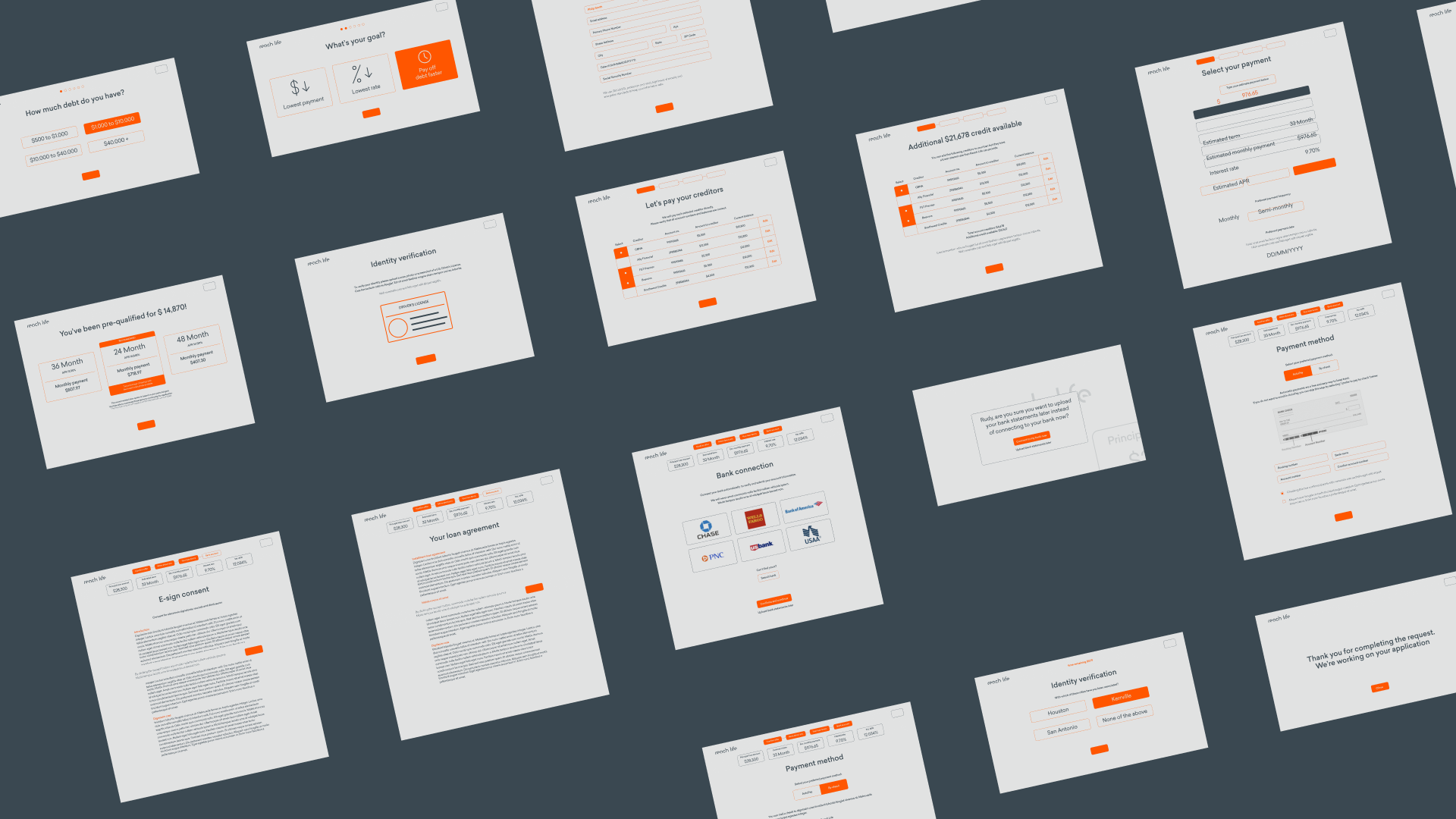
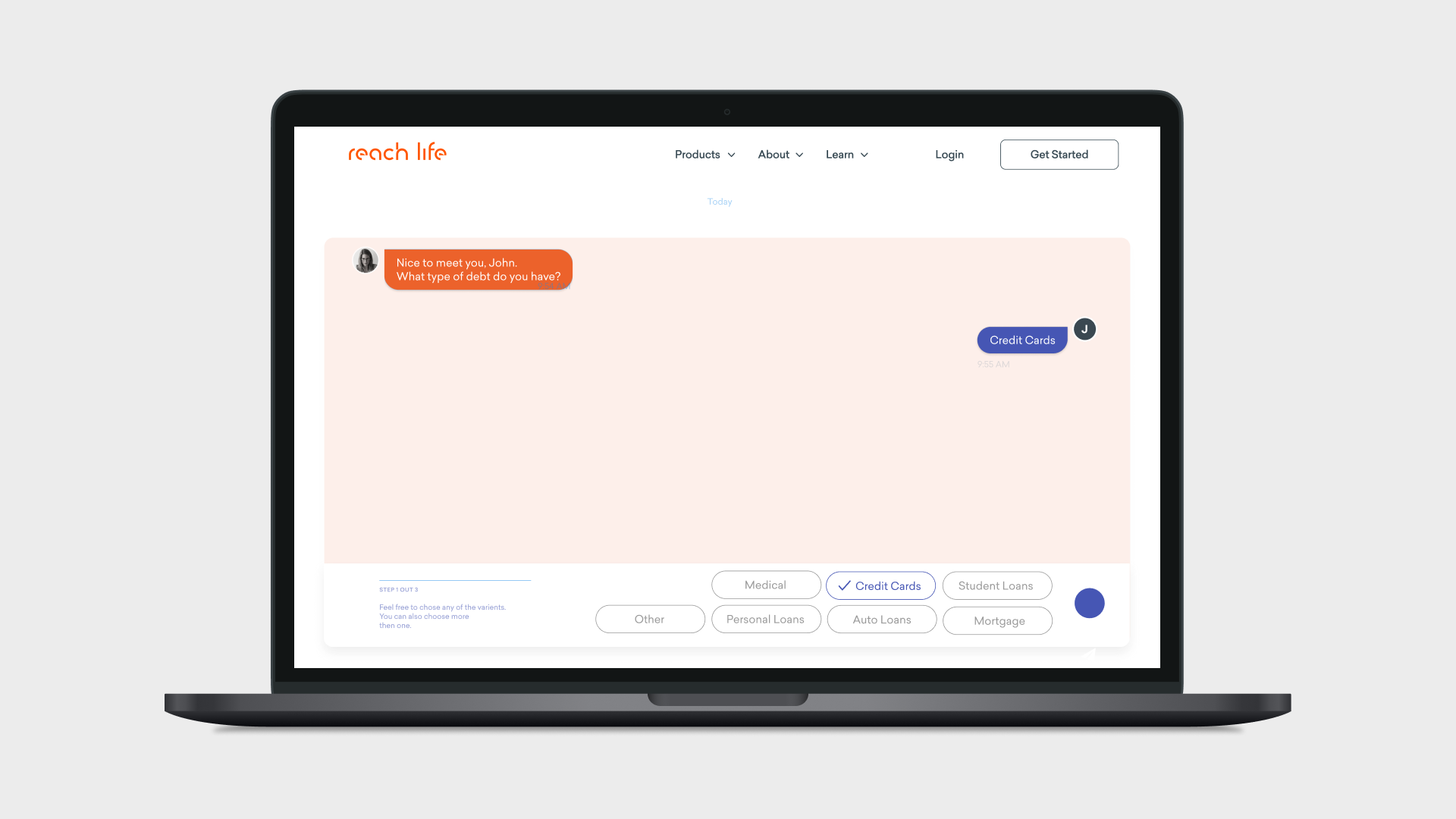
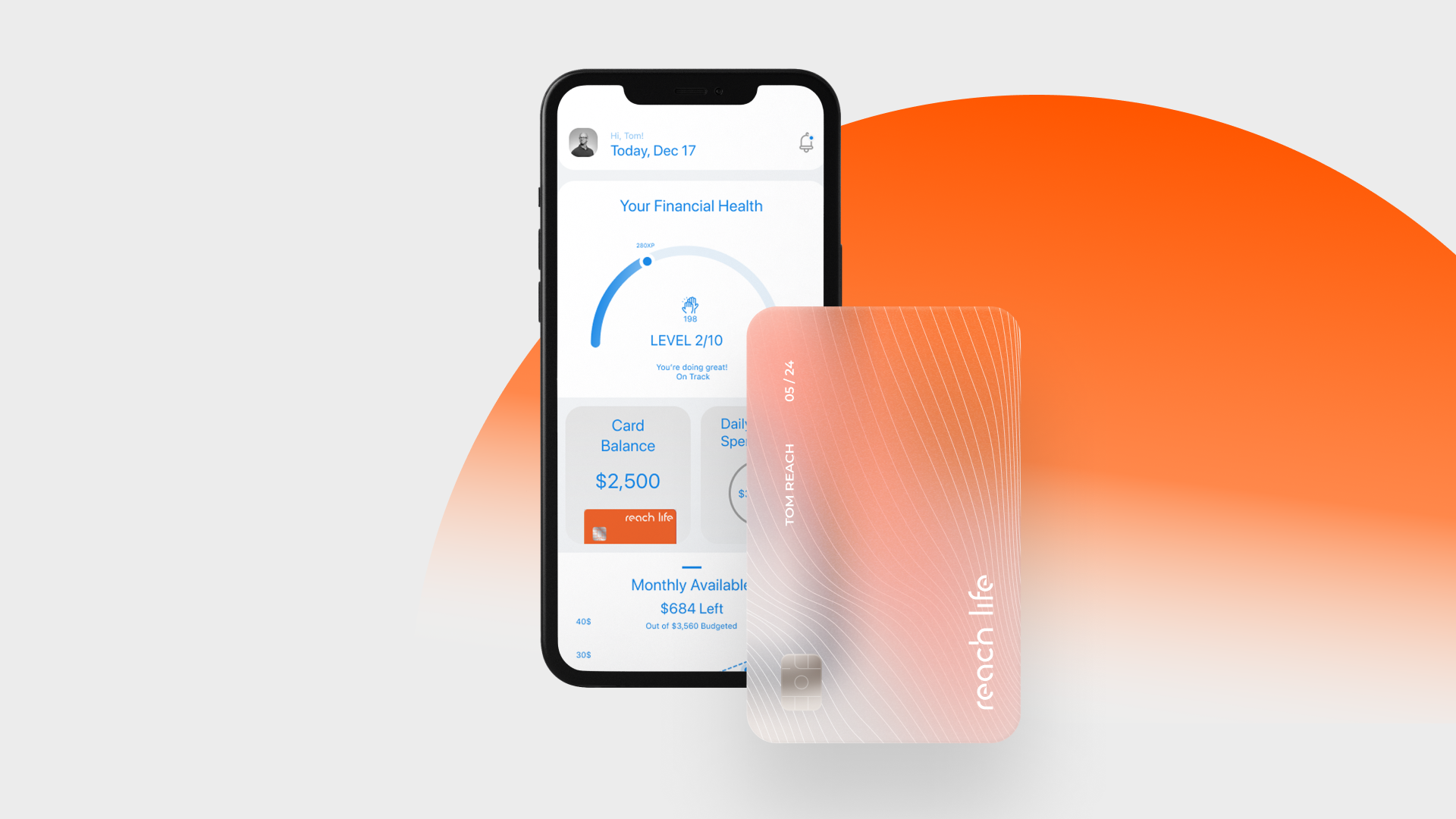

Problem
The journey out of debt is often broken across multiple tools and services that don’t communicate. Users may discover general advice on one platform, calculate repayment options on another, and attempt to track expenses in a standalone app. This fragmentation forces repetitive data entry, causes inconsistencies, and makes it difficult for people to connect long-term planning with everyday behavior. Combined with the emotional strain of debt and the complexity of financial concepts, this lack of continuity undermines user trust and engagement.
Solution
Reach Life delivers a coordinated service built around three interlinked touchpoints: the website, the Debt Calculator, and the Debt Guru app. The website is the entry point, setting the tone with accessible education and a clear invitation to begin a personalized plan. From there, users transition to the Debt Calculator, a desktop tool that translates their financial inputs into clear repayment strategies, using simple visuals to demystify complex choices. Once a plan is chosen, it flows directly into the Debt Guru mobile app, which supports the user day-to-day with automated expense tracking, reminders, and motivational nudges. By ensuring data continuity, consistent design language, and emotional coherence across all three touchpoints, Reach Life transforms a fragmented journey into an integrated service experience—guiding users seamlessly from awareness, to planning, to daily execution on the path toward financial stability.
The journey out of debt is often broken across multiple tools and services that don’t communicate. Users may discover general advice on one platform, calculate repayment options on another, and attempt to track expenses in a standalone app. This fragmentation forces repetitive data entry, causes inconsistencies, and makes it difficult for people to connect long-term planning with everyday behavior. Combined with the emotional strain of debt and the complexity of financial concepts, this lack of continuity undermines user trust and engagement.
Solution
Reach Life delivers a coordinated service built around three interlinked touchpoints: the website, the Debt Calculator, and the Debt Guru app. The website is the entry point, setting the tone with accessible education and a clear invitation to begin a personalized plan. From there, users transition to the Debt Calculator, a desktop tool that translates their financial inputs into clear repayment strategies, using simple visuals to demystify complex choices. Once a plan is chosen, it flows directly into the Debt Guru mobile app, which supports the user day-to-day with automated expense tracking, reminders, and motivational nudges. By ensuring data continuity, consistent design language, and emotional coherence across all three touchpoints, Reach Life transforms a fragmented journey into an integrated service experience—guiding users seamlessly from awareness, to planning, to daily execution on the path toward financial stability.
Akroma OS Interface Study
Design System Ops, UX/UI
2024 – in progress
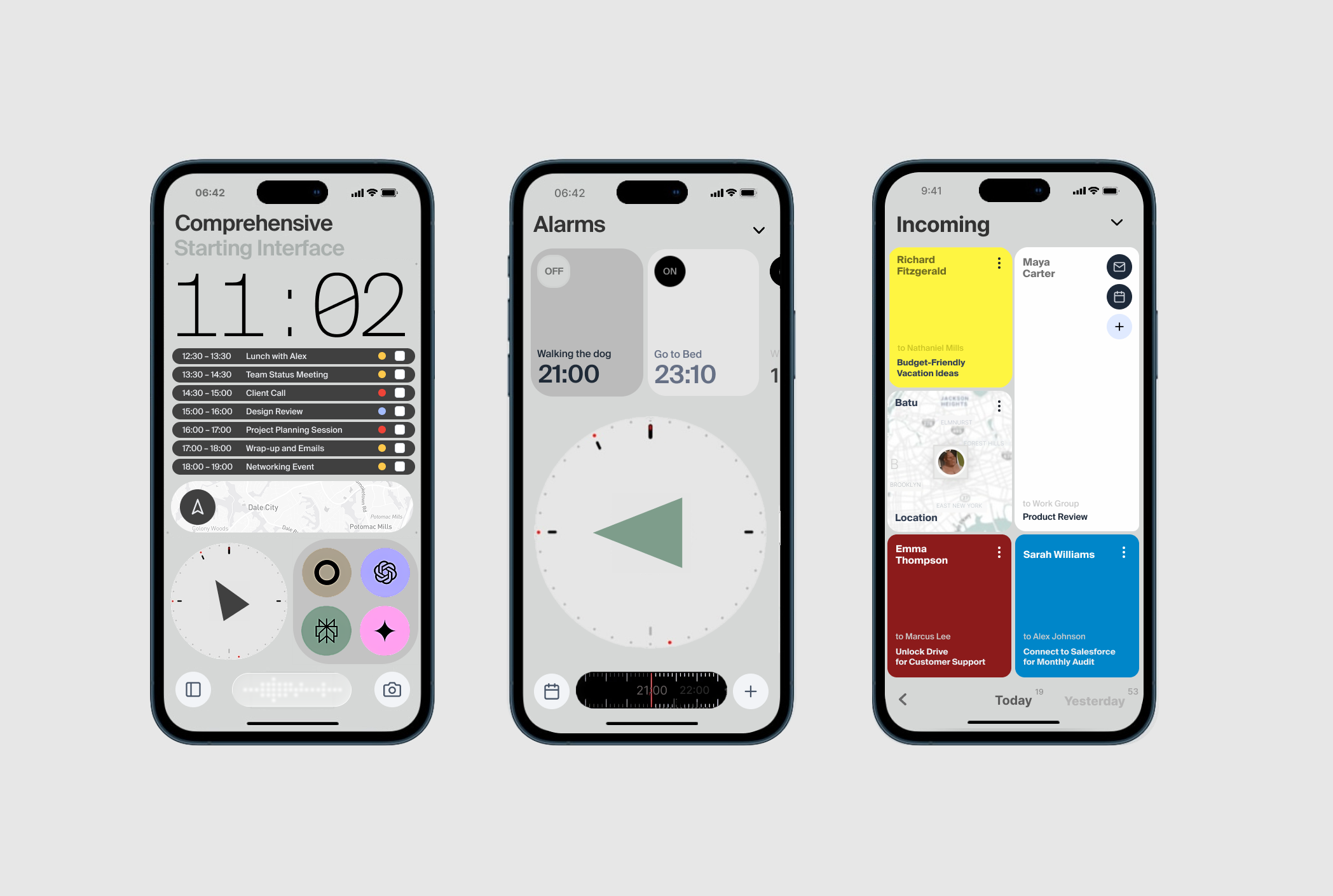
Context
The project is part of an open-source OS design system research proposal for Nothing products, aiming to create a cohesive and flexible ecosystem across mobile devices. It addresses the need for a modern interface that combines usability, personalization, and adaptability while aligning with the brand’s forward-thinking approach to technology.
Solution
Akroma is an open-source mobile OS interface designed to enhance usability and personalization. The project integrates human-centered design, visual prototyping, modular UI systems, and experimental interaction models to redefine how users engage with their devices. Current iterations feature unified communication flows, an adaptive alert system based on sensor data, and customizable notifications.
The design and research process is ongoing, with current testing and refinement ensuring that Akroma evolves into a flexible, community-driven interface that adapts to individual needs and grows with its users.
The project is part of an open-source OS design system research proposal for Nothing products, aiming to create a cohesive and flexible ecosystem across mobile devices. It addresses the need for a modern interface that combines usability, personalization, and adaptability while aligning with the brand’s forward-thinking approach to technology.
Solution
Akroma is an open-source mobile OS interface designed to enhance usability and personalization. The project integrates human-centered design, visual prototyping, modular UI systems, and experimental interaction models to redefine how users engage with their devices. Current iterations feature unified communication flows, an adaptive alert system based on sensor data, and customizable notifications.
The design and research process is ongoing, with current testing and refinement ensuring that Akroma evolves into a flexible, community-driven interface that adapts to individual needs and grows with its users.
Comizi d’Amore 2.0
Social Research, Digital Methods
2021
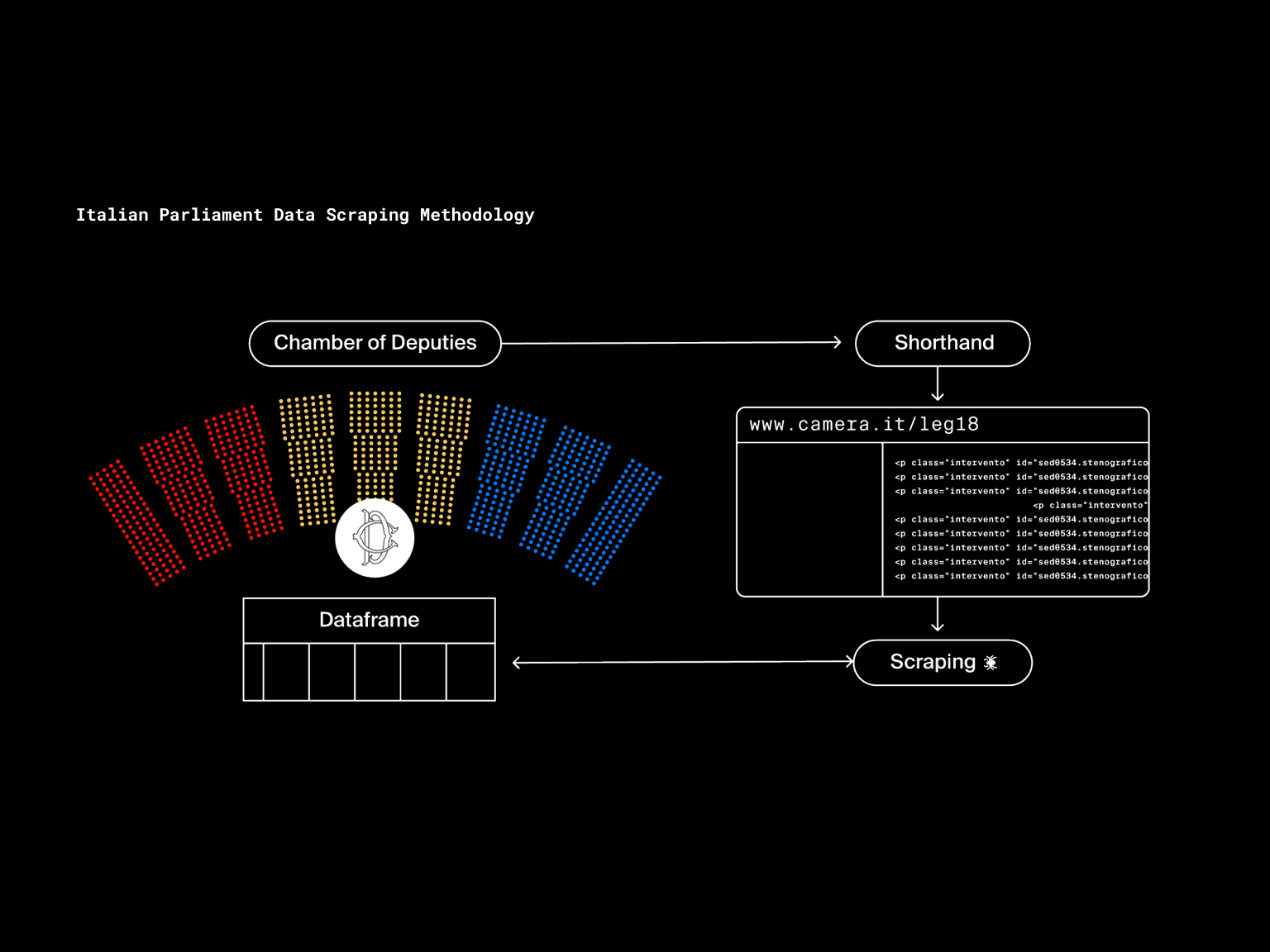
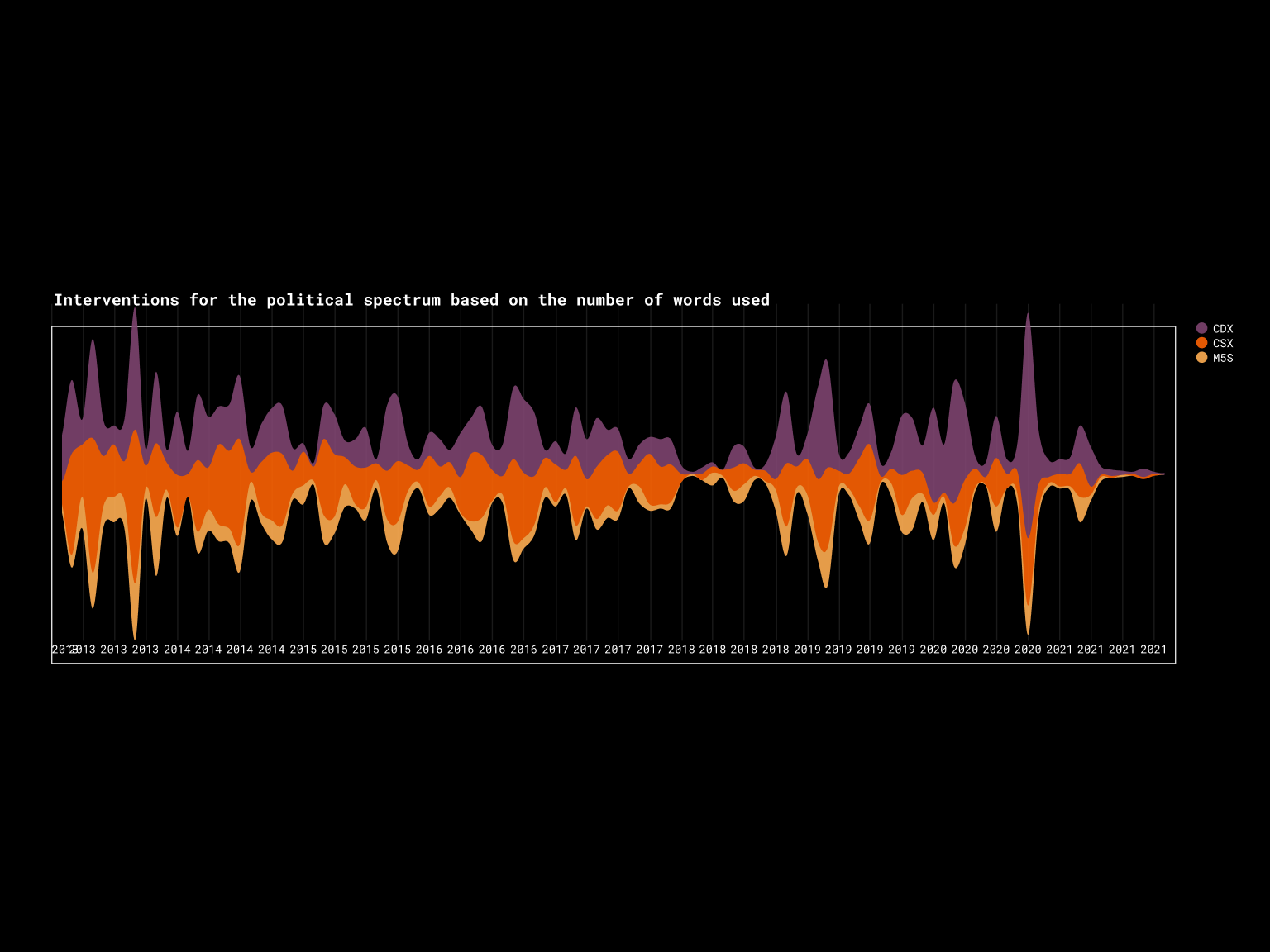
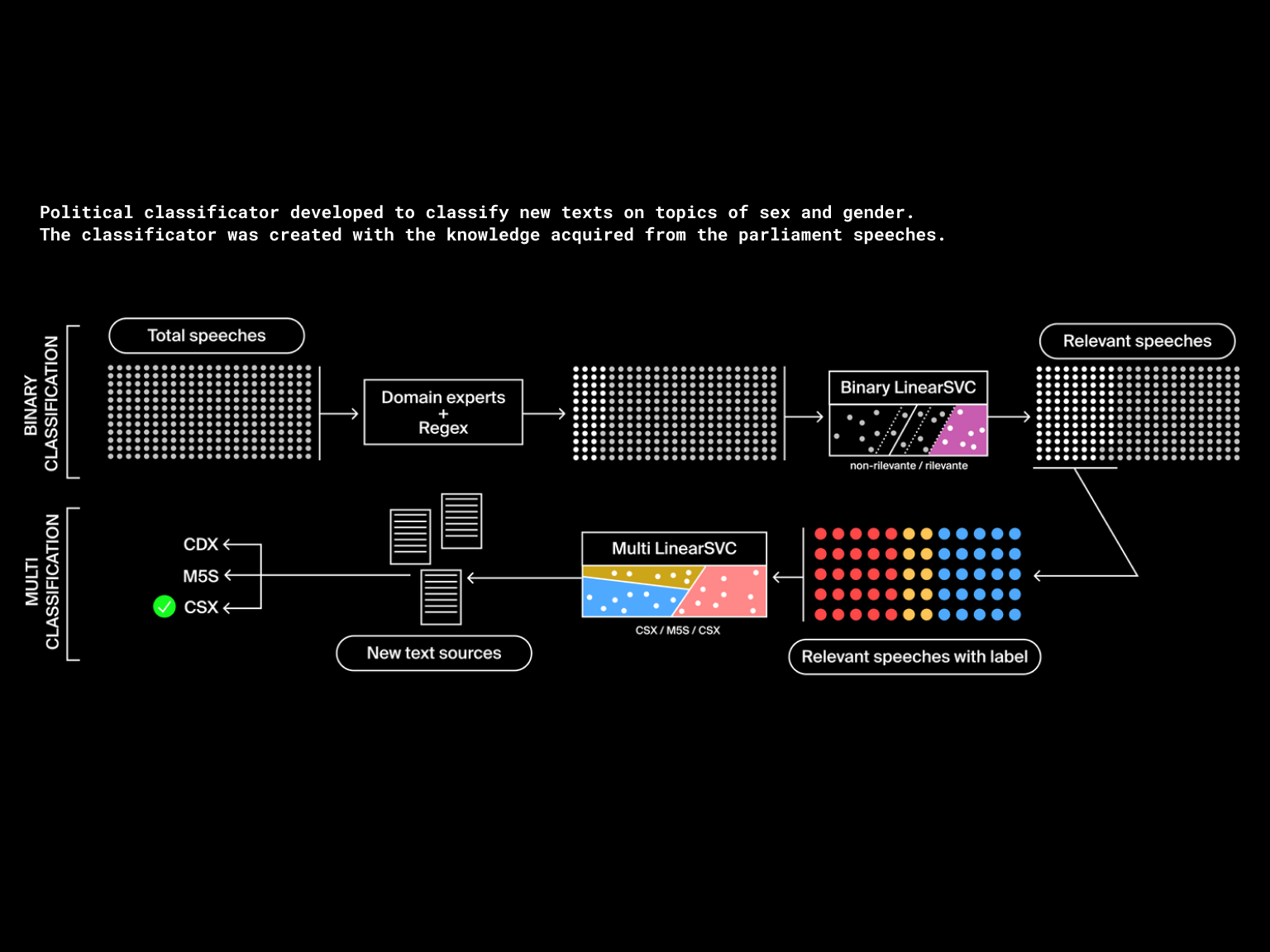



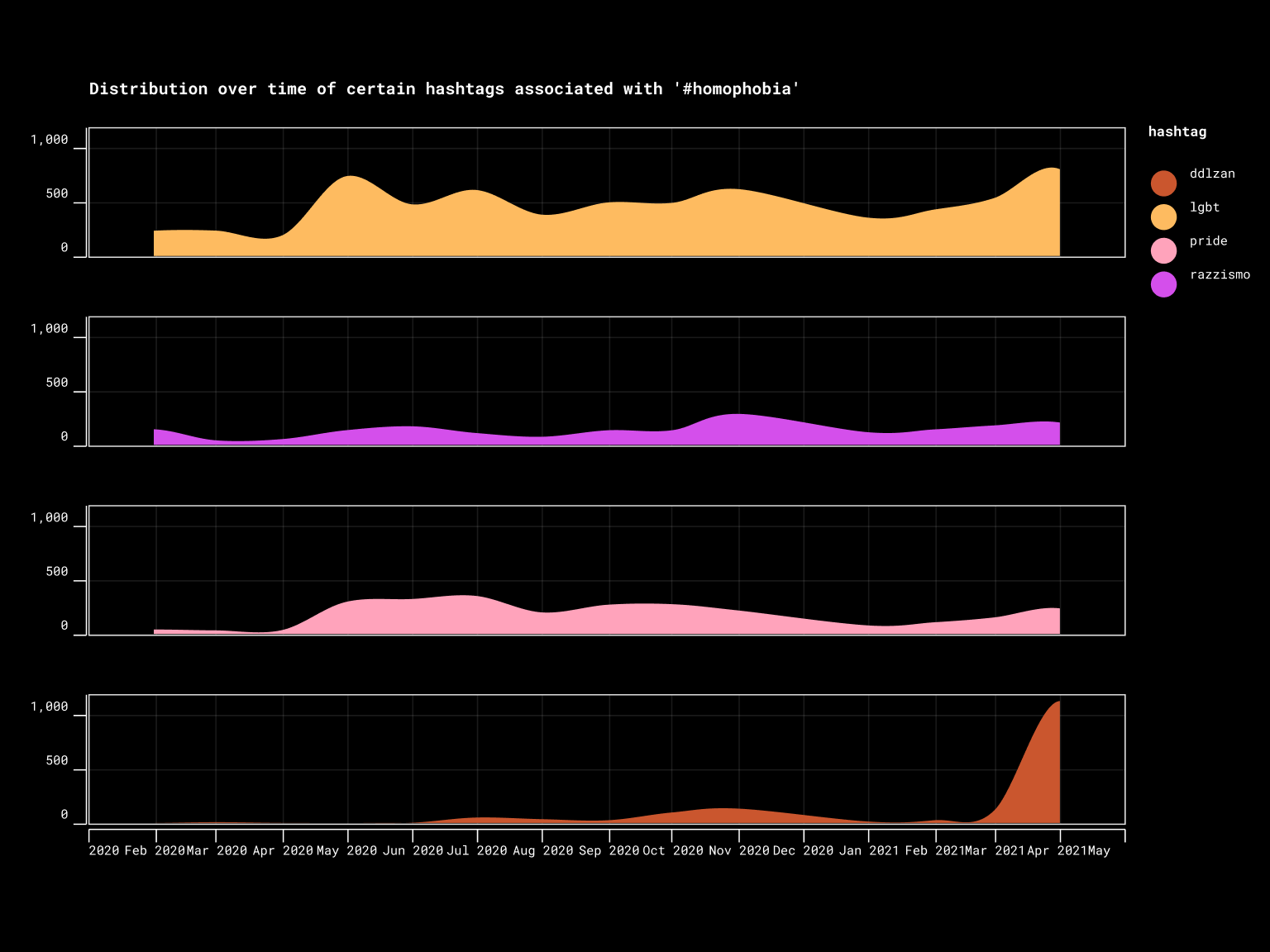
Comizi d’Amore 2.0 (link to full report here) investigates the language and political discourse around LGBTQIA+ civil rights in Italy (2021), reinterpreting Pasolini’s Comizi d’Amore (1964) through the lens of digital methods (Rogers, 2013) and controversy mapping (Venturini, 2010). By combining data collection, network analysis, and sentiment mapping, the project translates documentary-style inquiry into computational research practice.
Context
Understanding the dynamics of political debate on LGBTQIA+ rights in Italy requires going beyond traditional media and survey-based approaches. Online discourse is highly fragmented, dispersed across platforms, and often polarized. Capturing these dynamics means facing the challenge of unstructured, large-scale social media data and transforming it into meaningful evidence of how language, sentiment, and communities shape political narratives.
Methodologies
The project adopted digital methods for social research and controversy mapping techniques to analyse public discourse. Using Python and R for data collection and processing, and Gephi for social network visualization, conversations were mapped to reveal clusters of debate, connections between actors, and the circulation of specific narratives. Sentiment analysis and topic modelling were applied to classify and interpret how language framed civil rights issues and to understand emotional dynamics over time.
Results
The research produced a networked map of discourse communities surrounding LGBTQIA+ rights in Italy in 2021. It highlighted how different groups clustered around specific framings, identified influential voices, and showed how sentiment shifted across moments of heightened debate. By translating Pasolini’s journalistic-documentary approach into computational methodologies, Comizi d’Amore 2.0 demonstrated how digital methods can enrich cultural and political analysis. The study contributes both to the understanding of LGBTQIA+ rights discourse and to the growing field of data-driven social research.
Rogers, R. (2013). Digital Methods. MIT Press.
Venturini, T. (2010). “Building on Faults: How to Represent Controversies with Digital Methods.” Public Understanding of Science, 19(3), 258–273.
Context
Understanding the dynamics of political debate on LGBTQIA+ rights in Italy requires going beyond traditional media and survey-based approaches. Online discourse is highly fragmented, dispersed across platforms, and often polarized. Capturing these dynamics means facing the challenge of unstructured, large-scale social media data and transforming it into meaningful evidence of how language, sentiment, and communities shape political narratives.
Methodologies
The project adopted digital methods for social research and controversy mapping techniques to analyse public discourse. Using Python and R for data collection and processing, and Gephi for social network visualization, conversations were mapped to reveal clusters of debate, connections between actors, and the circulation of specific narratives. Sentiment analysis and topic modelling were applied to classify and interpret how language framed civil rights issues and to understand emotional dynamics over time.
Results
The research produced a networked map of discourse communities surrounding LGBTQIA+ rights in Italy in 2021. It highlighted how different groups clustered around specific framings, identified influential voices, and showed how sentiment shifted across moments of heightened debate. By translating Pasolini’s journalistic-documentary approach into computational methodologies, Comizi d’Amore 2.0 demonstrated how digital methods can enrich cultural and political analysis. The study contributes both to the understanding of LGBTQIA+ rights discourse and to the growing field of data-driven social research.
Rogers, R. (2013). Digital Methods. MIT Press.
Venturini, T. (2010). “Building on Faults: How to Represent Controversies with Digital Methods.” Public Understanding of Science, 19(3), 258–273.
Undisciplining Photography Symposium
Web Design, Identity
2021
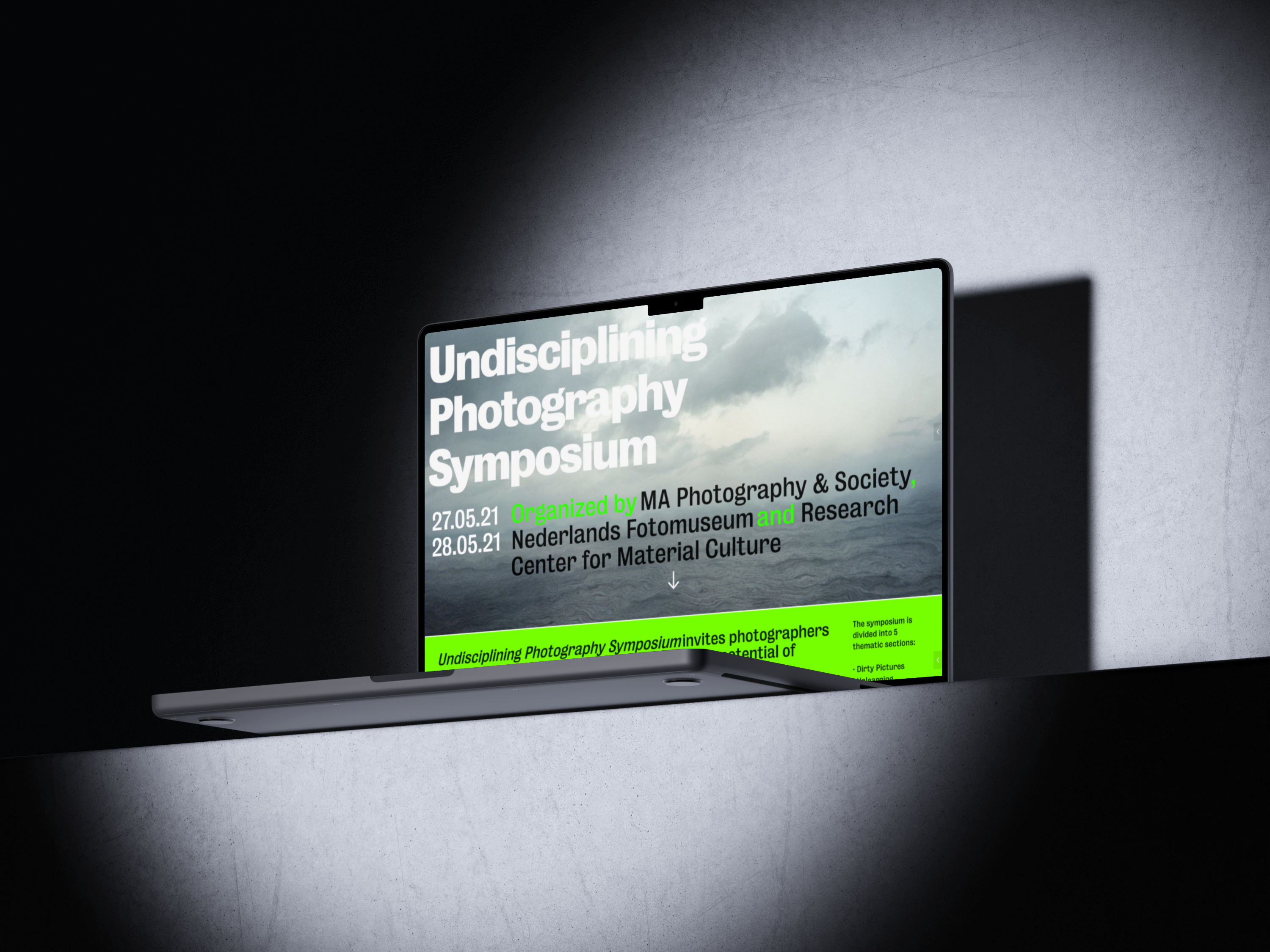
The Undisciplining Photography Symposium, held on May 27–28, 2021, at the Nederlands Fotomuseum and Wereldmuseum Rotterdam, invited photographers and researchers to debate the potential of photography in contemporary visuality. Organized by the MA Photography & Society program at the Royal Academy of Art, The Hague, the symposium explored questions such as: What issues shape our lives today? How do you approach them visually? What informs your visual strategies?
Problem
The symposium’s extensive program of speeches, talks, and debates, spanning multiple thematic sections and diverse topics, made it challenging for participants to navigate the schedule efficiently. Presenting this wealth of information in a clear and accessible way was essential to ensure attendees could fully engage with sessions, locate relevant content, and participate meaningfully in discussions. Without a structured approach, attendees risked feeling overwhelmed by the complexity and scope of the event.
Solution
To address this challenge, a streamlined, one-page website was developed, featuring an intuitive index that organizes all sessions, talks, and debates in a single, easy-to-navigate layout. The website categorizes content into thematic sections, providing detailed information on speakers, topics, and schedules. This design allows participants to quickly find relevant events, explore the program efficiently, and access information without confusion. By presenting the symposium’s complex program clearly, the website enhances user experience and facilitates deeper engagement with the event’s critical discussions.
Problem
The symposium’s extensive program of speeches, talks, and debates, spanning multiple thematic sections and diverse topics, made it challenging for participants to navigate the schedule efficiently. Presenting this wealth of information in a clear and accessible way was essential to ensure attendees could fully engage with sessions, locate relevant content, and participate meaningfully in discussions. Without a structured approach, attendees risked feeling overwhelmed by the complexity and scope of the event.
Solution
To address this challenge, a streamlined, one-page website was developed, featuring an intuitive index that organizes all sessions, talks, and debates in a single, easy-to-navigate layout. The website categorizes content into thematic sections, providing detailed information on speakers, topics, and schedules. This design allows participants to quickly find relevant events, explore the program efficiently, and access information without confusion. By presenting the symposium’s complex program clearly, the website enhances user experience and facilitates deeper engagement with the event’s critical discussions.
Toshi
Web Design, UX/UI
2021


Toshi, launched in 2017 by Sojin Lee, a founding member of Net-A-Porter, is a luxury-focused last-mile delivery platform that brings premium retail services directly to customers. Operating in major cities such as New York, London, and Los Angeles, Toshi allows customers to receive high-end fashion, beauty, and lifestyle products at a time and location that suits them, replicating the convenience and personalized experience of in-store shopping.
Context
Luxury retail brands face challenges in providing seamless and flexible delivery experiences that match the high standards of their in-store service. Customers increasingly expect fast, convenient, and personalized delivery options, including services like “try before you buy” or tailored sizing advice. Traditional e-commerce logistics often fail to meet these expectations, with delayed deliveries, inflexible scheduling, and a lack of real-time interaction between the brand and the customer
Solution
Toshi addresses these challenges with a seamless last-mile delivery platform and website designed for luxury retail. The platform offers same-day, next-day, and scheduled delivery with precise time slots, supported by local hubs and a sustainable electric vehicle network. Personalized services, such as “Wait & Try,” “Size Up/Down,” and “Try-Before-You-Buy,” replicate the in-store experience at home, enhancing customer satisfaction. The website complements the platform with an elegant, minimalist design that aligns with luxury branding, intuitive navigation, and responsive layouts across devices, providing both customers and partner brands with easy access to information and a smooth, high-end service experience.
In collaboration with Agency in The Wild
Context
Luxury retail brands face challenges in providing seamless and flexible delivery experiences that match the high standards of their in-store service. Customers increasingly expect fast, convenient, and personalized delivery options, including services like “try before you buy” or tailored sizing advice. Traditional e-commerce logistics often fail to meet these expectations, with delayed deliveries, inflexible scheduling, and a lack of real-time interaction between the brand and the customer
Solution
Toshi addresses these challenges with a seamless last-mile delivery platform and website designed for luxury retail. The platform offers same-day, next-day, and scheduled delivery with precise time slots, supported by local hubs and a sustainable electric vehicle network. Personalized services, such as “Wait & Try,” “Size Up/Down,” and “Try-Before-You-Buy,” replicate the in-store experience at home, enhancing customer satisfaction. The website complements the platform with an elegant, minimalist design that aligns with luxury branding, intuitive navigation, and responsive layouts across devices, providing both customers and partner brands with easy access to information and a smooth, high-end service experience.
In collaboration with Agency in The Wild